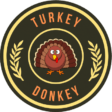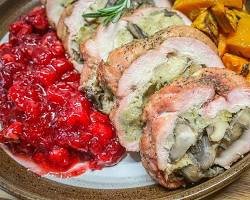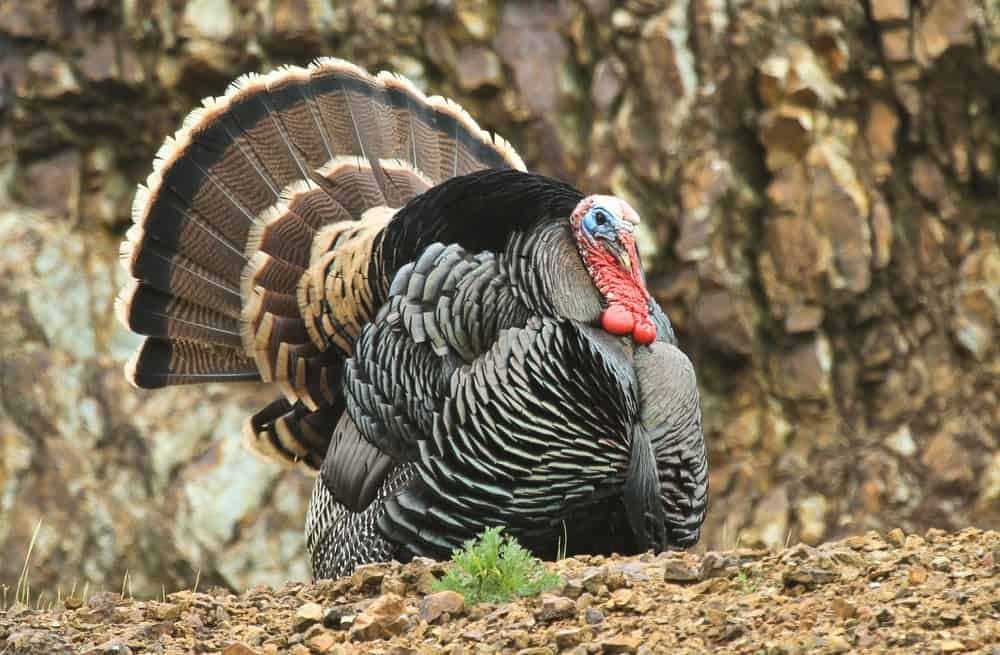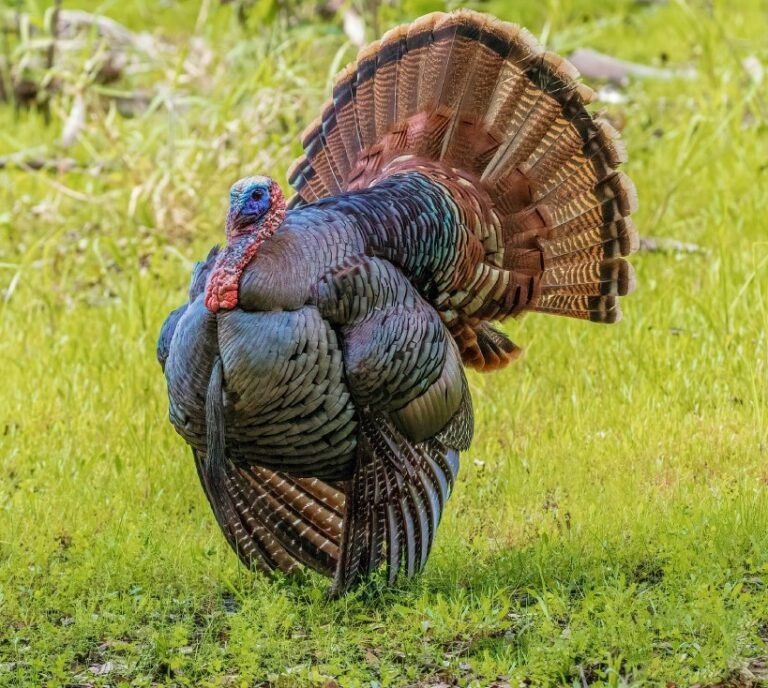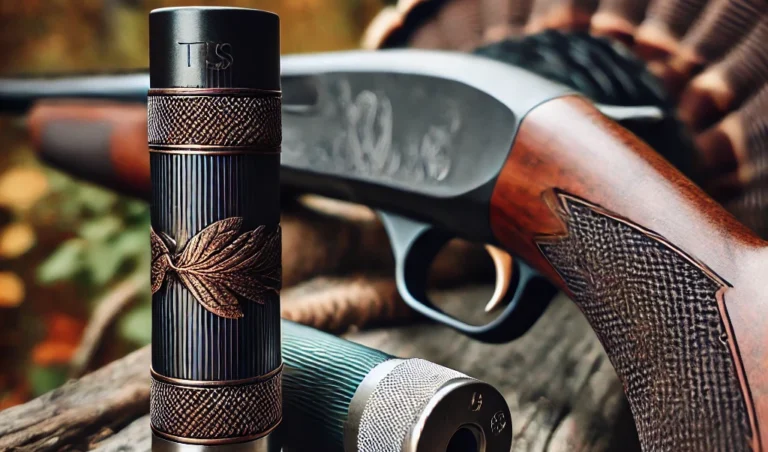Mastering Turkey Calls in 2024: Powerful Expert Techniques
Turkey hunting is a thrilling and challenging pursuit that requires calling skills, patience, and the right equipment. Calls are essential tools used to mimic the sounds turkeys make, and they are at the heart of every turkey hunter’s arsenal. Perfect calls are crucial for effectively attracting wild turkeys.

These calls communicate with turkeys in their language, enabling hunters to attract them closer. Understanding the art of turkey calling is crucial for a successful hunt, making it imperative for hunters to be familiar with different types of calls and their uses.
Mastering various calling techniques and producing realistic sounds is key to a successful turkey hunt. Accurate and timely calling significantly enhances the ability to entice and manipulate the turkey gobbling during hunting season.
What Are Turkey Calls?
Calls can be defined as devices or techniques used by hunters to imitate the vocalizations of wild turkeys. Turkeys are highly vocal birds, using various calls to communicate with each other throughout their daily activities.
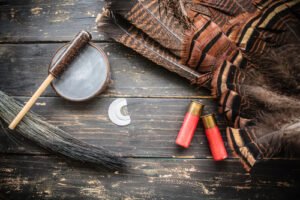
By using calls, hunters attempt to replicate these sounds accurately enough to fool wild turkeys into believing another bird is nearby. These calls aim to mimic different vocalizations made by turkeys based on specific situations.
Common sounds include gobbles (the distinct call made by male turkeys), clucks (short and soft sounds), purrs (gentle and rolling sounds), yelps (more intense and longer sequences), Cutts (sharp and excited notes), and kee-kees (high-pitched whistling). Loud yelps are used by hens to assemble flocks or young poults, and practicing tone, cadence, and volume is crucial to mimic realistic hen calls.
Each call serves a unique purpose during different phases of the hunting process.
Importance of Turkey Calls in Hunting
Turkey’s calling plays a vital role in hunting success. It allows hunters to attract turkeys into range, increasing their chances of a successful shot.
By mastering various calls, including soft calls that subtly attract turkeys with realistic and subtle sounds such as clucks, purrs, and low yelps, hunters can effectively communicate with gobblers or hens and provoke responses that bring them closer.
Soft calling is a technique used to attract gobblers by making gentle yelps or clucks. Starting with soft calls in quiet scenarios is crucial as it highlights the importance of timing and the emotional aspect of calling to create a more realistic hunting experience.
Using well-executed calls draws turkeys within shooting distance and helps create realistic scenarios that convince wary birds they are encountering other turkeys in their daily routines.
Hunters may employ aggressive calling techniques in specific situations, such as when dealing with hung-up or henned gobblers.
It is a great idea to start by making soft and subtle calls and gradually escalating to more aggressive tactics to entice the turkeys.
This level of realism improves the likelihood of the turkey hunter fooling cautious turkeys, ensuring they approach the decoys and provide clear shots for hunters.
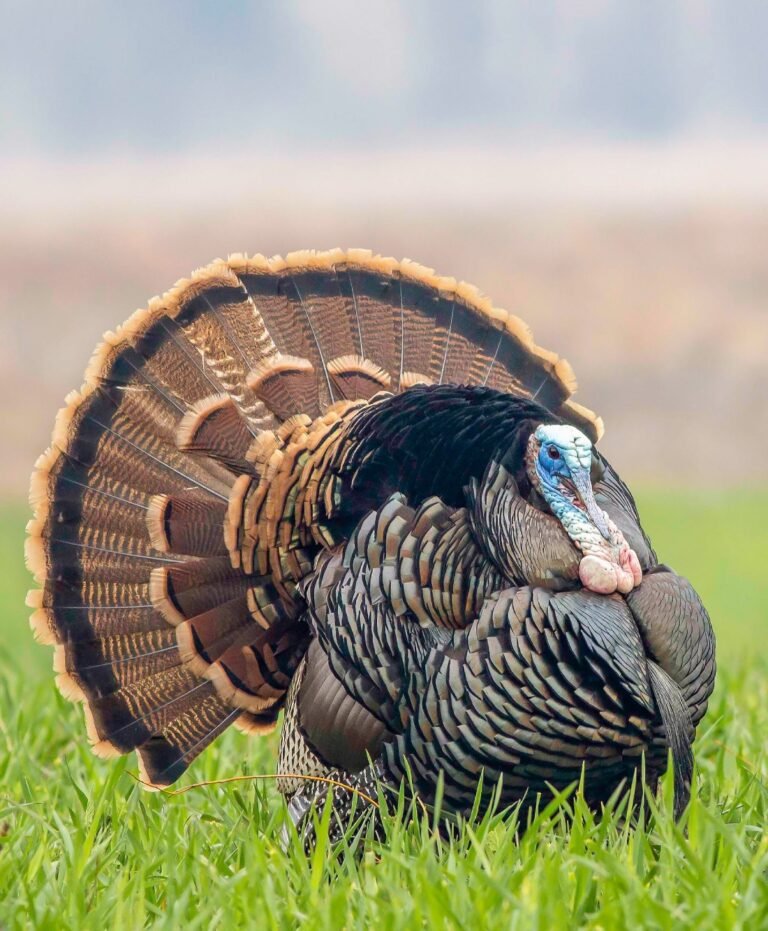
Types of Wild Turkeys Calls
Calls come in various forms, each with its unique design, sound production method, advantages, and disadvantages. Understanding the different types of calls is essential for anyone turkey hunting.
The three main categories are box calls, slate calls (pot calls), and mouth calls (diaphragm calls). Let’s start with friction calls.
Box Call
The box call consists of a hollow wooden box with a lid that slides across the top. It is typically made from hardwoods such as cherry or walnut.
These beautifully crafted instruments produce realistic sounds when the lid is moved back and forth. The ‘old school’ call is making calling turkeys easy.
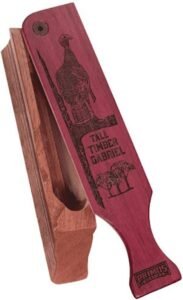
The box call design generally includes a paddle-shaped lid that creates friction against the sides of the box. This friction generates vibrations, simulating the sounds made by wild turkeys.
How They Produce Sound
To use this call effectively, you hold it in one hand, gripping the main body, and slide the lid back and forth across the top of the box.
By varying pressure and speed during this motion, you can imitate turkey vocalizations such as yelps, clucks, purrs, and even gobbling sounds.
The vibration produced by sliding the lid creates friction on different parts of the box’s internal surfaces. This friction generates specific tones and pitches that resemble those made by turkeys in their natural habitat.
Advantages and Disadvantages
The advantages of using a box call are numerous. They are relatively easy to use compared to other calls since their operation primarily involves sliding a lid back and forth. They are also the easiest for aggressive calling.
Additionally, box calls produce loud sounds that can effectively carry long distances. Their simplicity also allows easy maintenance and cleaning.
However, box calls may have a steeper learning curve when producing more nuanced sounds. They require good hand coordination and control to manipulate the lid correctly and create accurate vocalizations. Barred owl calls, known for their distinctive eight-note hoot, can enhance hunting strategies by drawing in wild turkey gobblers.
Slate Call (Pot Call)
The box call consists of a hollow wooden box with a lid that slides across the top. Typically made from hardwoods such as cherry or walnut, these beautifully crafted instruments produce realistic sounds when the lid is moved back and forth. The ‘old school’ call is making calling turkeys easy.
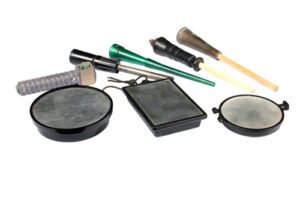
The slate or pot call is essential for mastering turkey hunting techniques. This turkey call consists of a round or square piece of slate, glass, aluminum, or other materials that act as the calling surface.
This surface is often set within a shell-like structure made from wood or synthetic materials.
The design is crucial for producing realistic noises, emphasizing the importance of the striker, a small stick, or a peg made from various materials such as wood or carbon.
The striker rubs against the calling surface to produce sounds, and weather conditions often influence the effectiveness of these calls.
How They Produce Sound
To use a slate call effectively, you hold the shell-like structure in one hand and grip the striker in your other hand at its base.
You can generate sounds by applying pressure to the striker against slate or glass surfaces while making circular motions.
When rubbing the striker across the slate’s surface, friction creates vibrations that mimic turkey vocalizations such as hen yelps, purrs, clucks, and even gobbles, depending on your skill level.
Advantages and Disadvantages
Slate calls offer several advantages for calling turkeys. They provide excellent versatility in sound variation and can produce convincing soft tones that mimic hen vocalizations with great accuracy.
Additionally, they are relatively compact and lightweight compared to other types of calls.
On the downside, slate calls may require more practice than box calls to master different techniques for producing specific sounds.
They may also be affected by weather conditions, as moisture or rain can negatively impact the friction between the striker and the slate surface. Understanding the ‘turkey woods’ is crucial for effective calling, as it helps hunters adapt their strategies based on the terrain and turkey behavior.
Mouth Call (Diaphragm Call)
The mouth call, also known as the diaphragm call, is unique in that they are designed to be placed inside the hunter’s mouth for operation.
Mouth calls comprise latex or polyurethane reeds stretched over a horse-shaped frame. The design typically includes a tape or fabric tab for properly positioning the call within the hunter’s mouth.
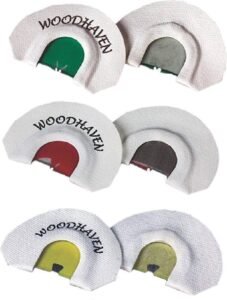
The number of reeds can vary from one to four, with more reeds allowing for increased sound variation.
How They Produce Sound
To use a mouth call effectively, place it against your palate using your tongue and secure it with gentle pressure from your upper teeth and lips.
By manipulating your tongue position on the mouth call and airflow across the reeds, you can produce a wide range of sounds, including yelps, clucks, cuts, purrs, and even gobbles.
As air passes through the gaps between the reeds while controlling tongue tension and airflow speed, vibrations are created that mimic turkey vocalizations with remarkable accuracy.
Advantages and Disadvantages
The mouthcall offers several advantages for turkey hunters who have mastered its technique. Firstly, it provides hands-free turkey calling once properly positioned in the mouth.
This allows hunters to remain ready to shoulder their firearm or bow while calling turkey simultaneously.
Furthermore, mouth calls excel in producing realistic sounds because they precisely mimic vocalizations. Additionally, they do not suffer from weather-related issues like box or slate calls since moisture or rain do not affect them.
However, mastering the mouth call requires practice and patience, as proper placement and tongue control can be challenging for beginners. Some individuals may be uncomfortable or have difficulty manipulating their tongues to achieve the wild turkeys sounds.
Custom Calls: Beyond the Basics
Wingbone Call
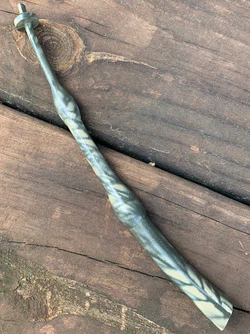
Wingbone calls hold a long-standing historical significance in key calling traditions. Originally used by Native Americans and early settlers, turkey hunters crafted these calls from the wing bones of turkeys.
The design and construction process of a wingbone call involves extracting the bones from the wings of harvested turkeys, cleaning them thoroughly, and then carefully drilling holes to create sound chambers.
The three bones, typically the radius, ulna, and humerus, are assembled with natural materials like wood or bone spacers. The unique shape and structure of wing bone calls contribute to their ability to produce a wide range of realistic sounds.
By manipulating airflow through different combinations of holes with one’s lips or fingers, hunters can create pitches, such as yelps, clucks, purrs, and even gobbles.
Unique Sounds Produced
The distinctive feature of wingbone calls is their ability to produce remarkably authentic turkey vocalizations.
Due to their construction using actual turkey bones and careful airflow manipulation through the sound chambers, these calls can remarkably accurately replicate a wide array of turkeys’ natural sounds.
Hunters often find wing bone calls excel at producing soft clucks or purrs, which can be highly effective when trying to imitate contented hens or calm down wary gobblers during close encounters.
Additionally, skilled callers can achieve realistic yelps that mimic excited hens and aggressive gobblers engaged in territorial disputes.
The versatility and lifelike qualities offered by wing bone calls have preserved their popularity among experienced hunters who appreciate mastering this traditional technique.
Gobble Tubes
Functionality in Mimicking a Gobbler’s Call
Gobble tube-shunters are unique imitations to imitate the distinctive gobbling sound of male turkeys. These devices consist of a hollow tube, often made from plastic or aluminum, with a reed or diaphragm mechanism that creates the characteristic resonance associated with gobbling.
By inhaling and exhaling forcefully into the tube while manipulating the reed or diaphragm with their tongue, hunters can replicate a gobbler’s call that carries a considerable distance.
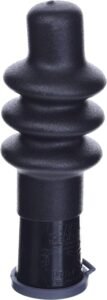
The functionality of gobble tubes lies in their ability to provoke responses from dominant gobblers defending their territory and curious subordinate males seeking interaction.
When used strategically, gobble tubes can elicit responses from distant turkeys and spark their curiosity, drawing them closer to the hunter’s position.
Techniques for Using Gobble Tubes Effectively
Mastering effective techniques when using a gobble tube is crucial for maximizing its effectiveness during turkey hunts. Firstly, it is essential to practice controlling airflow and manipulating the reed or diaphragm to produce realistic gobbles.
Experimentation with different tongue placement and pressure will allow for variations in pitch and tone, mimicking different gobbler personalities.
Additionally, hunters should aim to replicate natural cadences by incorporating pauses between gobbles and varying the intensity of each call.
This mimics the behavior of real gobblers while creating an alluring sense of authenticity that can entice nearby turkeys into investigating further.
It is important to exercise caution when using these calls as they generate loud sounds that may attract other hunters; therefore, being mindful of your surroundings is crucial.
Push Button Call
Push button calls: many hunters love user-friendly calls due to their simplicity yet effectiveness in producing realistic sounds.
These calls consist of a small box or cylinder with a button attached on top, connected to a striker or paddle inside it via a spring. The striker makes contact with the paddle by pushing and releasing the button, producing a sound that imitates various turkey vocalizations.
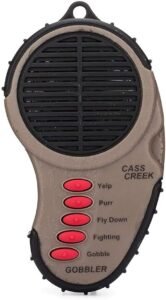
Push button calls can produce yelps, clucks, purrs, and even gobbles, depending on the manufacturer’s design and the caller’s skill level. They are versatile tools that can be used effectively in different hunting scenarios.
Popularity Among Hunters
Push button calls have gained significant popularity among hunters of all experience levels due to their user-friendly operation and consistent performance in the field.
Their simplicity allows beginners to learn how to produce realistic turkey sounds quickly without extensive practice or calling expertise.
Additionally, experienced hunters often appreciate push-button calls as reliable backups or alternatives when more intricate calls fail or require more finesse to operate effectively.
The compact size and ease of use make push-button calls convenient for hunters who prefer light gear setups during their outings.
Turkey Call Accessories: Enhancing Your Calling Experience
The striker plays a vital role in producing authentic and enticing turkey sounds. Strikers are available in various materials, each contributing to a unique sound quality.
Hardwood strikers, such as hickory or walnut, produce clear and crisp tones, perfect for mimicking hen calls. On the other hand, softwood strikers offer deeper and raspier sounds that effectively imitate gobbler calls.
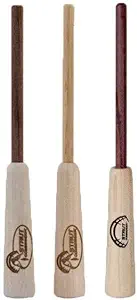
Moreover, some strikers are even constructed with synthetic materials like carbon or fiberglass for enhanced durability and consistency in sound production. To achieve optimal results when using strikers, use your call surface with varying pressure and rhythm to mimic realistic turkey vocalizations.
Call Cases: Safeguarding Your Treasured Calls
Protect your precious calls from damage during transport or storage to achieve optimal results when using strikers’ cases. They come in various styles and materials to suit every hunter’s preference.
Traditional leather or nylon cases with individual compartments offer secure housing for each call type while preventing them from rubbing against one another. Alternatively, compact zippered pouches provide convenience and easy access for hunters on the move.
Some specialized cases even feature water-resistant properties, safeguarding your cherished calls during unpredictable weather conditions. Remember that investing in a suitable call case not only extends the lifespan of your calls but also preserves their pristine condition for consistently excellent performance.
Conclusion – Turkey Hunting Calls
Reliable turkey calls are essential for success in turkey hunting. However, complementing these calls with carefully chosen accessories, such as high-quality strikers and protective call cases, can elevate your calling experience further.
The choice of striker material can dramatically impact the sounds produced, allowing you to craft realistic turkey vocalizations that entice even the most cautious gobblers. Likewise, ensuring your calls are properly protected in well-designed cases extends their longevity and guarantees consistently excellent performance.
So, equip yourself with these fine accessories and confidently embark on turkey hunting adventures, knowing you have everything you need to communicate effectively with these majestic birds. Happy hunting!
